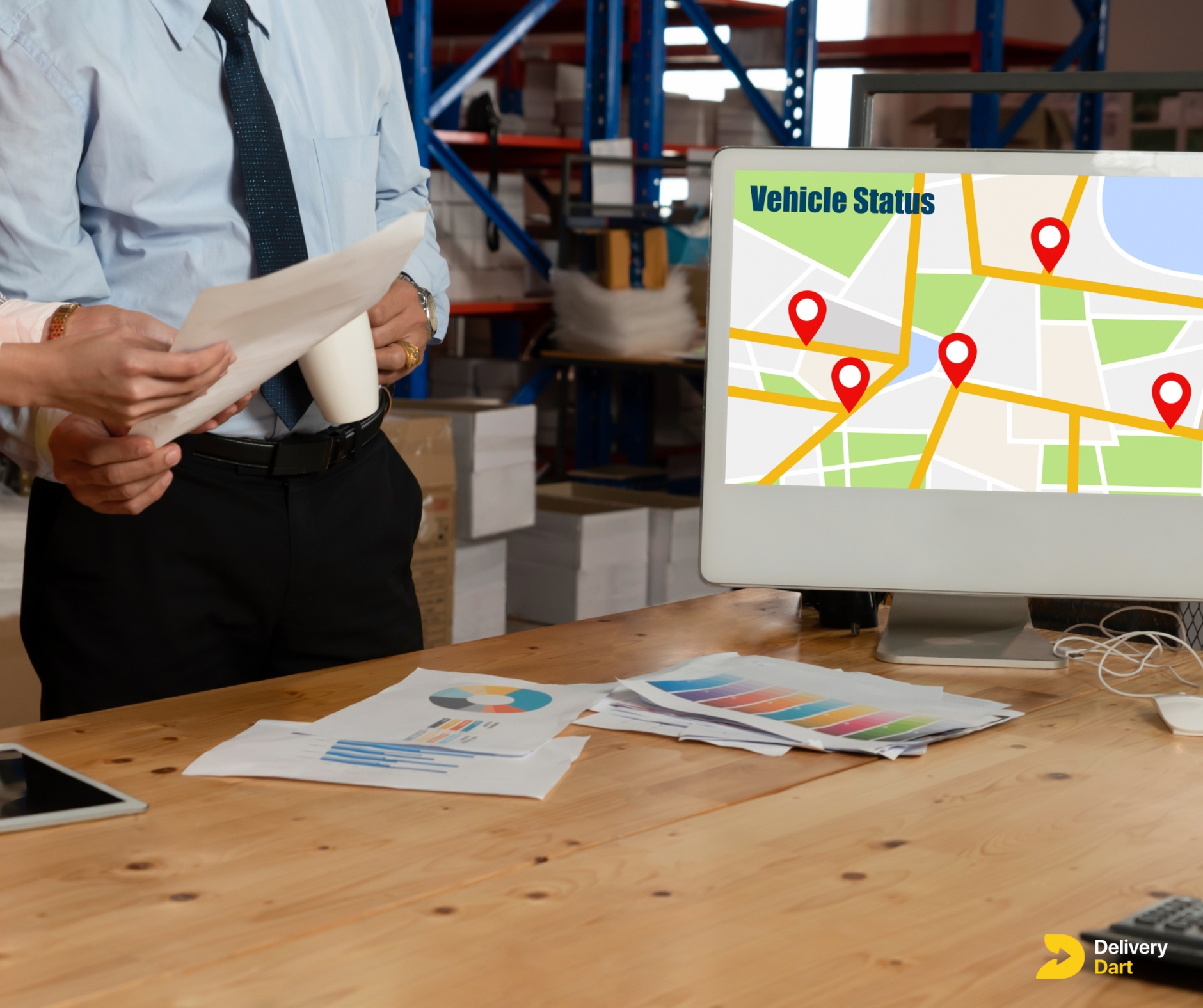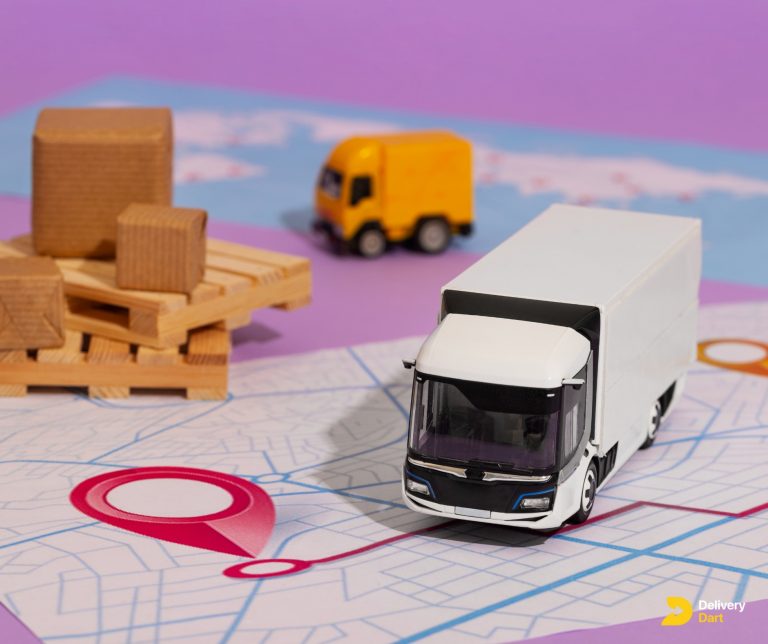Imagine losing thousands of dollars a year just because your delivery routes aren’t optimized. Sounds frustrating, right? Well, that’s exactly what’s happening to businesses worldwide. Whether you’re running a small delivery fleet or managing a complex logistics operation, inefficient routes are costing you time, money, and customer satisfaction.
Now, here’s the good news: You don’t have to let poorly planned routes hold your business back any longer. With the right approach to route scheduling, you can streamline your deliveries, cut down on fuel costs, and even boost your bottom line—all while keeping your customers happy. In 2024, advancements in technology have made route scheduling easier, smarter, and more efficient than ever.
In this blog, we’ll break down the basics of route scheduling and show you exactly how optimizing your delivery routes can transform your business. From real-time data integration to the latest tools like DeliveryDart, we’ll give you the strategies and insights you need to maximize your delivery efficiency. Ready to stop wasting time and start seeing results? Let’s dive in.
Understanding the Basics of Route Scheduling
What is Route Scheduling?
Think of route scheduling as the secret weapon behind every successful delivery business. In simple terms, it’s all about figuring out the best way to organize multiple deliveries so your drivers spend less time on the road and more time delivering. The goal? Minimize fuel usage, cut down travel time, and ultimately reduce costs.
When you map out your delivery routes strategically, you’re not just saving money—you’re also ensuring that your customers receive their orders faster. This becomes a key competitive advantage in today’s fast-paced world, where customers expect quicker deliveries and better service. Efficient route scheduling is the engine that powers that kind of success.
Types of Route Scheduling
When it comes to scheduling your delivery routes, one size does not fit all. Here are the most common approaches businesses use:
- Static Routing: The traditional way of scheduling deliveries. Routes are pre-planned and rarely change. It’s great if you know your deliveries will stay the same day after day. But, it can be limiting if you’re dealing with a lot of last-minute changes or variables.
- Dynamic Routing: The modern alternative that uses real-time data to adjust routes on the fly. Have a last-minute delivery? Or maybe there’s unexpected traffic? Dynamic routing can reroute your drivers instantly to save time and avoid delays. This flexibility is a lifesaver in industries where things can change fast.
- Multi-stop Scheduling: This is where your drivers make multiple stops along a single route. It’s ideal for businesses delivering to multiple customers in the same area—think grocery deliveries or e-commerce. Efficient multi-stop scheduling ensures no wasted trips and maximizes every mile driven.
- Time-sensitive Routing: Some deliveries can’t wait. Maybe it’s food that needs to stay hot or a time-bound service. Time-sensitive routing prioritizes these deliveries to make sure they arrive within the required window.
Challenges Faced in Route Scheduling
Let’s be honest: route scheduling isn’t always smooth sailing. No matter how much you plan, there are always challenges that can throw your schedule off track:
- Traffic Congestion: Traffic is unpredictable. A roadblock or an accident can cause delays that ripple across your entire day.
- Last-minute Changes: Customers canceling or adding orders at the last minute can leave you scrambling to reorganize routes, leading to inefficiencies and potential delays.
- Unpredictable Weather: Sudden storms, snow, or heavy rain can slow down drivers or force route changes that weren’t part of the original plan.
By understanding these challenges and implementing the right strategies, you can minimize their impact and keep your operations running smoothly. In the next section, we’ll dive into how technology can help solve many of these common problems.
The Importance of Technology in Route Scheduling

Adopting Advanced Tools
In today’s world, trying to manually plan routes is like using a paper map when everyone else is using GPS. The good news is that with technology like AI-powered route optimization software, you don’t have to do all the heavy lifting yourself. Tools like DeliveryDart are transforming how businesses manage route scheduling in 2024 by taking the guesswork out of the process.
These tools can instantly analyze hundreds of routes and choose the most efficient one based on real-time data. Whether it’s calculating the fastest path, avoiding traffic, or minimizing fuel consumption, AI is doing the hard work for you—saving time, money, and reducing headaches.
Real-time Data Integration
What really sets modern route optimization apart is its ability to use real-time data. Imagine your driver is on their way, but suddenly there’s a traffic jam or road closure. With traditional planning, that driver would get stuck, causing delays. But with real-time data integration, advanced tools can reroute your driver on the fly.
GPS tracking, live traffic updates, and even customer preferences are taken into account to dynamically adjust the route as conditions change. This means your deliveries are more likely to arrive on time, and your drivers spend less time sitting in traffic.
Not only does this improve efficiency, but it also enhances customer satisfaction—because let’s face it, no one likes waiting longer than they have to!
To really see the impact of technology, just look at the numbers. Companies that have adopted AI-powered route scheduling tools have reported:
- 30% reduction in delivery times—this means faster deliveries and happier customers.
- 20% lower fuel consumption, thanks to more efficient routes and fewer miles driven.
These figures highlight why integrating technology into route scheduling is no longer just a competitive advantage—it’s a necessity for any business that wants to thrive in the logistics and delivery industry in 2024.
Key Strategies for Efficient Route Scheduling in 2024
Prioritize Delivery Windows
Not all deliveries are created equal. Some customers need their packages right away, while others are more flexible. That’s where prioritizing delivery windows comes into play. By organizing routes around time-sensitive deliveries, you ensure that urgent orders arrive when they’re supposed to, keeping customers happy and reducing the risk of late deliveries.
Customer preferences, like specific delivery times or windows, should also guide your scheduling. For example, if a customer requests delivery within a narrow time frame, placing them at the beginning of the route ensures you meet that expectation. This strategy not only boosts customer satisfaction but also helps you maintain a reputation for reliability.
Use Predictive Analytics
Imagine knowing about potential delivery delays before they happen. That’s exactly what predictive analytics allows you to do. By analyzing historical data, traffic patterns, weather forecasts, and even driver behavior, predictive tools can anticipate potential issues that might slow down deliveries.
For example, if a storm is expected later in the day, your route optimization software can reroute drivers in advance to avoid areas that are likely to be affected. This foresight helps businesses minimize disruptions, keeping deliveries on track despite unexpected changes. It’s like having a crystal ball for your logistics operations!
Optimize for Multiple Deliveries
If your drivers are making multiple stops, you want to be sure they’re not zig-zagging across town, wasting time and fuel. Multi-stop route optimization ensures that deliveries are made in the most efficient order, with the shortest possible distance between stops. This reduces travel time, fuel consumption, and vehicle wear and tear.
Think of it like this: Instead of treating each delivery as a separate task, multi-stop optimization looks at the bigger picture, organizing all deliveries into a single, streamlined route. Research shows that businesses using this strategy can save up to 15% on delivery costs.
When companies adopt these strategies—prioritizing delivery windows, using predictive analytics, and optimizing for multi-stop routes—the results are clear:
- 15% reduction in delivery costs for businesses using multi-stop optimization.
- Predictive analytics can reduce delays by up to 25%, leading to more on-time deliveries and happier customers.
The Environmental and Financial Impact of Route Scheduling
Reducing Environmental Footprint
In 2024, sustainability isn’t just a buzzword—it’s a priority for businesses everywhere. One of the easiest ways to reduce your company’s environmental footprint is through route optimization. By cutting down on unnecessary miles driven, you’re not just saving time and money—you’re also lowering your carbon emissions. Every mile you don’t drive is a small step toward reducing your company’s environmental impact.
Think about it this way: The fewer miles your delivery vehicles drive, the less fuel they burn, and the fewer greenhouse gases they emit. For companies committed to sustainability, optimized routes are a powerful way to hit those green goals while keeping customers happy. In fact, research shows that businesses using route optimization can reduce their carbon emissions by up to 15%. It’s a win-win for the planet and your business.
Fuel Savings
Fuel is one of the biggest costs in running a delivery fleet, but here’s the good news: with route optimization, you can significantly cut back on fuel usage. Well-planned routes mean fewer miles traveled, fewer idling stops, and more efficient driving overall. This leads to big savings over time.
For businesses managing large fleets, even a small reduction in fuel consumption can have a huge impact. In fact, a properly optimized route can lower fuel usage by up to 10%. Over the course of a year, those savings can really add up, especially when you’re managing dozens or even hundreds of vehicles.
Cost Efficiency
When you think about cutting costs, fuel isn’t the only factor. Route scheduling also helps reduce wear and tear on your vehicles, which means fewer repairs and lower maintenance costs. Less time spent on the road means less strain on engines, brakes, and tires—all of which directly impact your bottom line.
On top of that, reducing the time your drivers spend on the road means they can complete more deliveries in a single day. This increases your overall productivity without increasing labor costs. The result? A more efficient, cost-effective operation that maximizes profitability.
By combining fuel savings, reduced maintenance costs, and improved delivery efficiency, route optimization directly boosts your business’s financial health while helping you meet sustainability goals.
Tools and Software to Improve Route Scheduling
Best Software for 2024
When it comes to route optimization, there are several top-tier tools available in 2024 that can dramatically improve your delivery efficiency. Here are two standout options:
- RouteXL: This tool is perfect for small businesses that need to plan multi-stop routes. With RouteXL, you can optimize up to 20 stops for free, making it a cost-effective option. For businesses with larger fleets, paid plans allow for more extensive route optimization. Its ease of use and ability to quickly import addresses make it ideal for delivery drivers who need a simple yet effective solution.
- OptimoRoute: For larger businesses with complex needs, OptimoRoute offers advanced features like multi-day route planning, workload balancing, and real-time adjustments. It also supports detailed analytics, which allows businesses to track driver performance and improve customer satisfaction. OptimoRoute is known for helping businesses reduce mileage by up to 20%, increase order capacity by 14%, and cut driver-related costs by 12%.
Both tools offer unique advantages, but the best choice depends on your business’s size and specific requirements.
Real-world Example: Quirch Foods
One of the most compelling examples of the power of route optimization comes from Quirch Foods, a large food distributor in the U.S. and Latin America. Quirch Foods used DispatchTrack’s route optimization software to improve its routing processes, cutting routing time by 50%. This improvement allowed them to expand their business without sacrificing efficiency. The company could bring new partners on board and handle more deliveries without risking delays, thanks to dynamic route adjustments and real-time updates.
Statistics
- Businesses using advanced route optimization tools like OptimoRoute report a 20% reduction in mileage and 8x faster planning, which significantly boosts operational efficiency.
- Tools like DispatchTrack and OptimoRoute can lead to a 15% reduction in delivery costs, while increasing on-time deliveries by 20%.
This combination of cost savings, improved delivery times, and enhanced customer satisfaction makes route optimization software a game changer for businesses in 2024.
Ready to Revolutionize Your Deliveries?
Optimizing your delivery routes in 2024 isn’t just about saving money—it’s about driving your business into a future of efficiency, sustainability, and success. From cutting fuel costs and reducing your carbon footprint to keeping your customers happy with faster deliveries, the benefits of route optimization are undeniable. With the right tools like DeliveryDart, you’re not only automating your routes but also setting your business up for long-term growth.
Whether you’re using AI-powered software to dodge traffic jams in real time or relying on predictive analytics to stay one step ahead of delays, route optimization is the competitive edge your business needs. It’s time to take control of your logistics, streamline your operations, and let your business thrive. With the right strategies and tools, you can make 2024 your most efficient year yet.
So why wait? Start integrating smarter route scheduling today and watch your business reach new heights with DeliveryDart!


